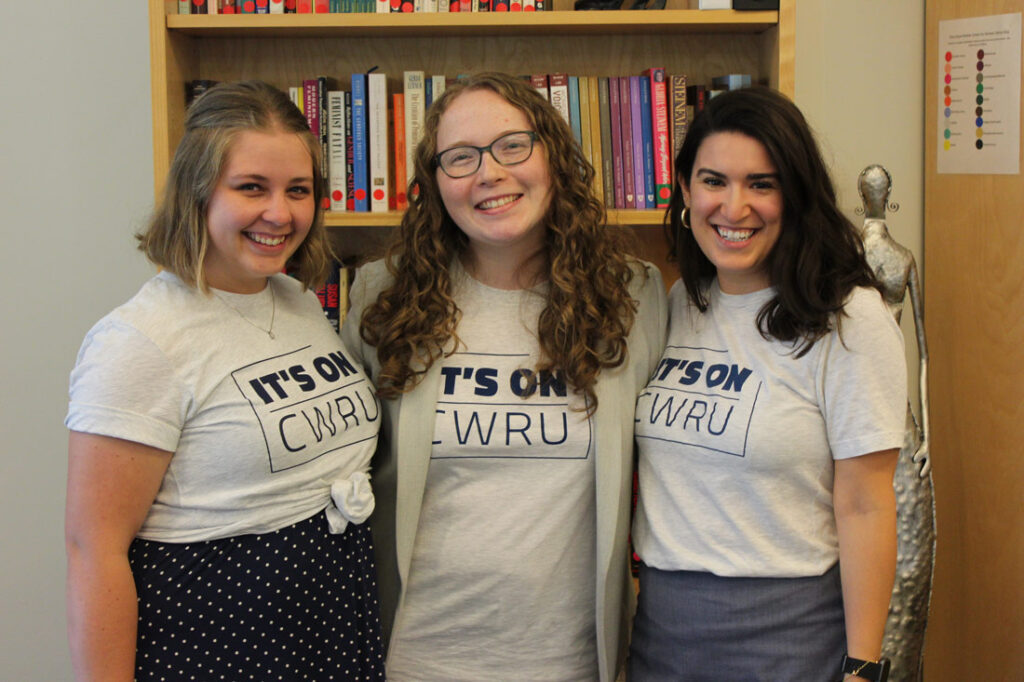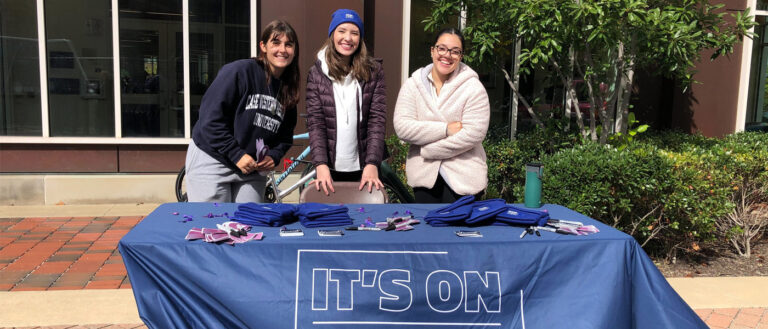October is Domestic Violence Awareness Month—a time dedicated to connecting and uniting those who work on domestic violence issues, raising awareness about these issues, and educating the public about what is considered domestic violence and who it affects.

At Case Western Reserve, the university’s violence-prevention initiative It’s On CWRU advocates for domestic violence victims year round. Throughout the month of October specifically, the team provides additional opportunities for the campus community to learn about the movement, how to recognize violence, how to intervene, and what resources are available.
To help all members of the Case Western Reserve community better understand how domestic violence can affect victims and how to get help, The Daily reached out to Heather Paramore, director for violence prevention and response with the Flora Stone Mather Center for Women, who manages the It’s on CWRU initiative.
Read on to learn five things Paramore believes everyone should know about domestic violence.
1. Domestic violence is about power and control.
Domestic violence, also sometimes referred to as intimate partner violence (IPV), is a pattern of behaviors used by one partner to maintain power and control over another partner in an intimate relationship. It is an umbrella term used to describe a spectrum of abusive behaviors that present in various forms, including:
- Physical abuse: Any intentional, unwanted contact with your body by the abuser or an object within the abuser’s control. This could include hitting, choking, threatening with a weapon or blocking an entrance or exit.
- Sexual abuse: Any behavior that pressures, coerces or forces someone to do something sexually they do not want to do.
- Psychological/emotional/verbal abuse: Any non-physical behavior used by an abuser to control and manipulate the feelings and behaviors of their partner. This might look like screaming or yelling, body shaming or stalking, but may also appear as subtler behaviors such as isolation, which can be difficult to detect.
- Financial abuse: Any behavior aimed at controlling or restraining a person’s finances or their ability to provide for themselves through a job or public assistance that they receive.
- Technological/digital abuse: The use of technology to intimidate, bully, harass, control or stalk a partner. Monitoring social media accounts, stealing or demanding passwords, and forcing you to take or send unwanted pictures are all examples of digital abuse.
2. Anyone can be a victim or perpetrator of domestic violence.
Domestic violence does not discriminate based on age, gender, race, sexuality, religion, socioeconomic status or education level. Abuse can occur in both opposite-sex and same-sex relationships and can impact intimate partners who are married, living together, dating or share children. It is important to remember that domestic violence is a learned behavior. Children who grow up in a home exposed to domestic violence are more likely to fall into a cycle of abuse later in life. Many survivors grow up in environments where abuse was normalized and may not recognize that they are being abused. Even though domestic violence is a learned behavior, engaging in abuse is still a choice.
3. Leaving an abusive relationship can be difficult and even life-threatening.
Leaving an abusive relationship is often one of the most dangerous periods of time for survivors. When abusers lose power and control over their partner, they may retaliate in harmful ways or escalate their abusive behaviors. Even in situations where the abuser does not retaliate, there are many reasons why a survivor may choose to stay in an abusive relationship. Common reasons people choose to stay in abusive relationships include fear, normalized abuse, shame, intimidation, low self-esteem, lack of resources, disability, immigration status, cultural context, children, and love. Regardless of why a survivor may stay in an abusive relationship, all survivors deserve to be believed and supported.
4. If you or someone you know is experiencing or has experienced domestic violence, you are not alone. There are resources available to help.
Navigating your options and resources as a survivor of domestic violence can be overwhelming. Victim advocates are trained professionals who specialize in helping victims advocate for their rights, locate available resources and options, and navigate various systems to assist survivors on their healing journey. They are not lawyers, medical professionals or counselors, but can provide emotional support, crisis intervention, safety planning, education about survivor rights, and resource referrals. They can also provide legal advocacy—such as making lawyer referrals, assisting with filing police reports, and accompanying survivors to law enforcement interviews—and medical advocacy, such as accompaniment to rape examinations or making referrals to medical professionals and counselors.
Case Western Reserve University has a full-time, confidential victim advocate dedicated to supporting our students. Students who would like to schedule an appointment with the advocate can do so online or by calling 216.368.2536. In-person, Zoom and telephone appointments are available. For more information about advocacy services at CWRU, visit the Mather Center’s website.
5. The CWRU Coordinated Community Response Team (CCRT) is actively working to improve the university’s domestic violence prevention and response efforts.
In 2021, Case Western Reserve University was awarded a grant through the U.S. Department of Justice Office of Violence Against Women (OVW) Grants to Reduce Sexual Assault, Domestic Violence, Dating Violence, and Stalking on Campus Program (Campus Program). This three-year campus program grant is aimed at helping CWRU improve its comprehensive response to domestic violence, dating violence sexual assault and stalking using a survivor-centered approach. The CWRU Coordinated Community Response Team (CCRT), a broad group of campus and community partners, is responsible for overseeing the planning and implementation of this work. If you would like to partner with the CCRT or would like to learn more about its work, sign up here.
To learn more about violence prevention efforts and resources available to the campus community, visit the It’s On CWRU website.

